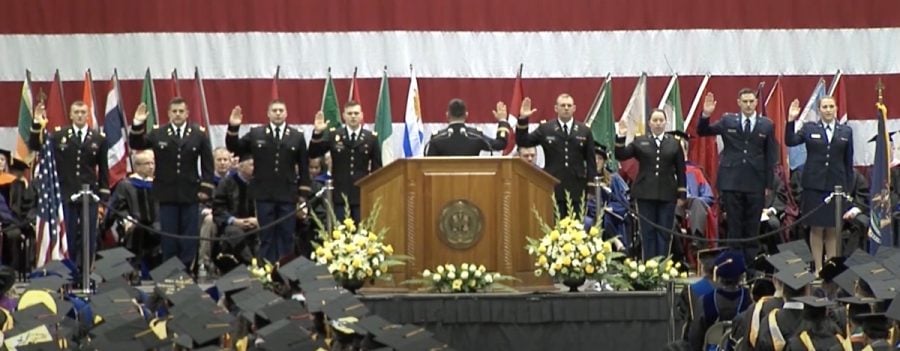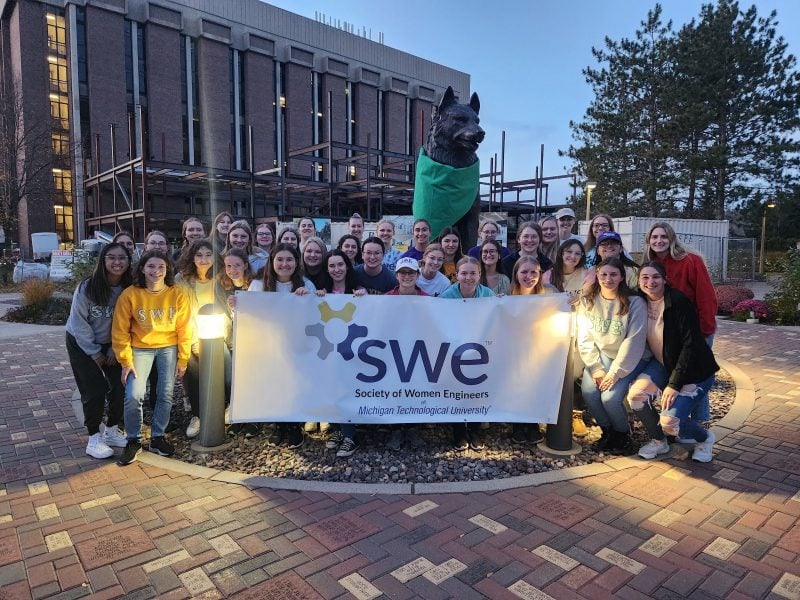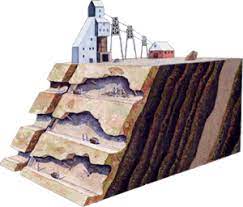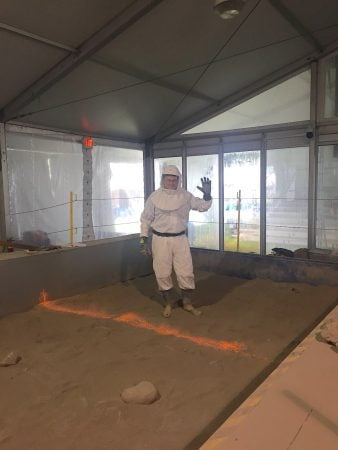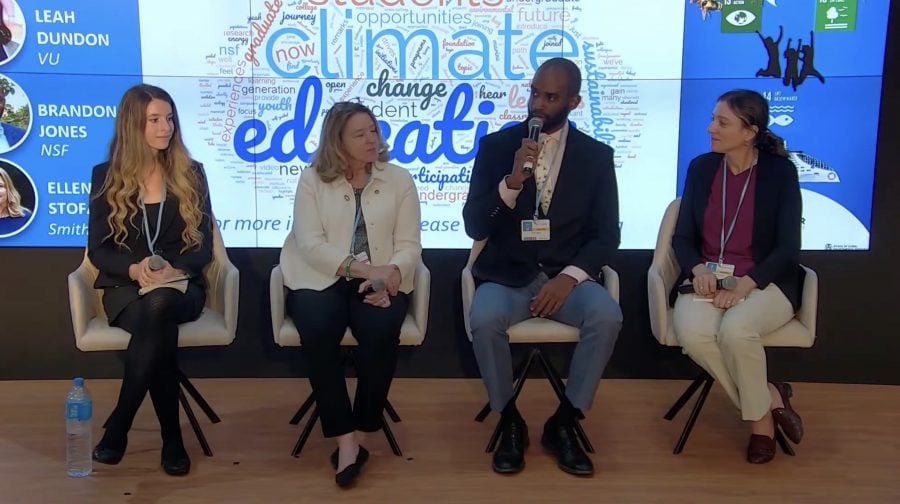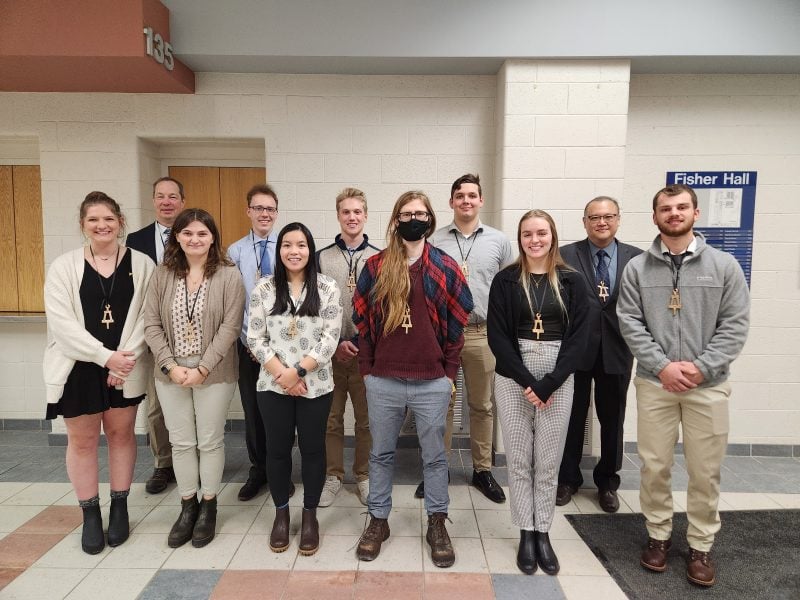
The College of Engineering inducted 11 students and two eminent engineers into the Michigan Tech chapter of Tau Beta Pi at the end of the Fall 2022 semester.

Tau Beta Pi is a nationally recognized engineering honor society and is the only one that recognizes all engineering professions. Students who join are the top 1/8th of their junior class, top 1/5th of their senior class, or the top 1/5th of graduate students who have completed 50% of their coursework. The society celebrates those who have distinguished scholarship and exemplary character, and members strive to maintain integrity and excellence in engineering.
Fall 2022 Initiates
Undergraduate Students:
Brodey Bevins, Civil Engineering
David Bradbury, Biomedical Engineering
Erin Ganschow, Environmental Engineering
Heather Goetz, Mechanical Engineering
Madison Ide, Biomedical Engineering
Samuel Kuipers, Civil Engineering
Michael Loucks, Mechanical Engineering
Graduate Students:
Anna Li Holey, MS Environmental Engineering
Nathan Machiorlatti, MS Civil Engineering
North Yates, PhD Mechanical Engineering-Engineering Mechanics
Yifan Zhang, MS Environmental Engineering
Eminent Engineers
Dr. Jin Choi, Professor and Chair, Department of Electrical and Computer Engineering
Dr. Jason Blough, Interim Chair and Distinguished Professor, Department of Mechanical Engineering-Engineering Mechanics









